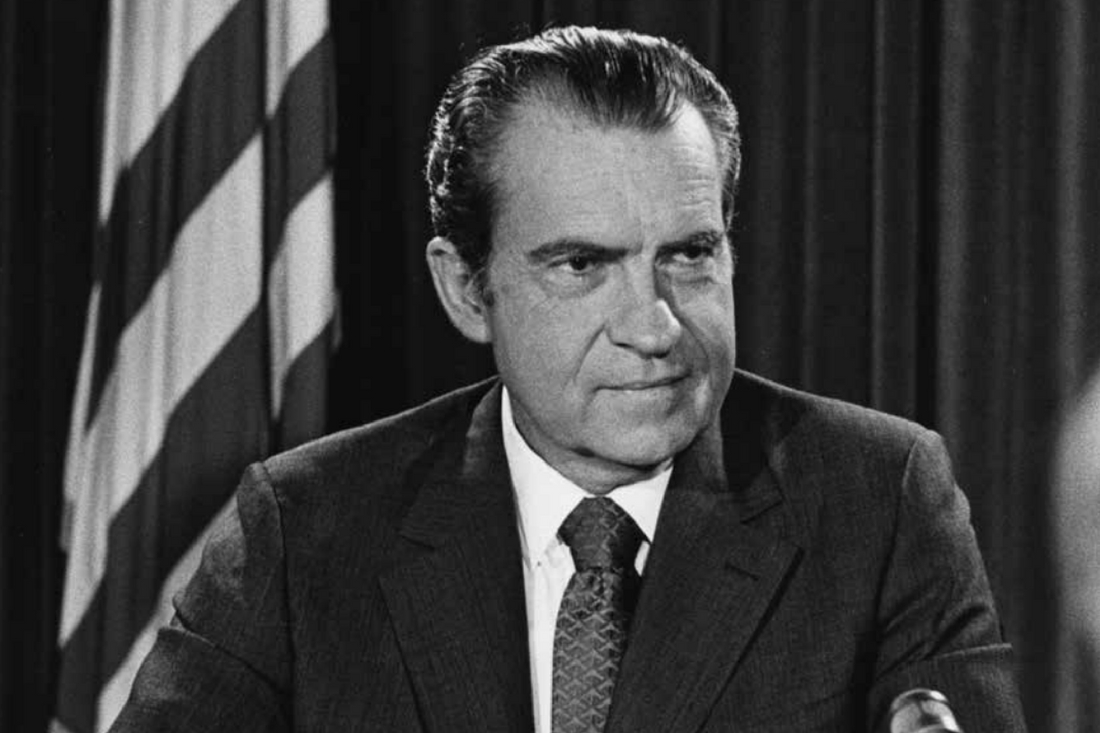From the National Review Online
Media’s Unhinged Attacks on Trump Recall the Treatment of Nixon
Both presidents inspired a demented fury against them.
By Conrad Black — December 13, 2017
In this season of frenzied liberal assault on the incumbent president and the almost uniform view of the long-standing bipartisan political elite of the United States that President Trump is a maniac, any falsehood about him or act of obstruction is justified in damaging his presidency, impairing his ability to govern, and bringing forward the swiftest possible return of the status quo ante-Trump. It is now routine for the principal outlets of media mythmaking to invoke the legacy of Richard Nixon confected by his accusers of long ago. The particular myth that has for several years been the preferred falsehood to resurrect and hurl at Mr. Nixon as if it were a law of Archimedes is that he sabotaged the Vietnam peace talks when he was a presidential candidate in 1968. Journeyman liberal historian Robert Dallek in the preface to his recent biography of Franklin D. Roosevelt stated in passing as indisputable fact unworthy of elaboration that Richard Nixon had violated the Logan Act of 1799 at the end of the 1968 presidential election campaign when he secretly advised the government of South Vietnam to abstain from cooperating with President Johnson’s peace initiative.
On December 4, the New York Times — in an editorial unequivocally stating that President Trump’s advisers had violated the Logan Act by undermining the foreign policy of the sitting U.S. president in his contacts with the Russians — invoked this left-wing truism about Nixon as if citing a clause of the Constitution that had not been challenged for centuries. It stated: “Richard Nixon once again proves useful. In the closing days of the 1968 presidential campaign Mr. Nixon ordered H. R. Haldeman, later his chief of staff, to throw a ‘monkey wrench’ into the Vietnamese peace talks, knowing that a serious move to end the war would hurt his electoral prospects. Mr. Nixon denied that he did this to the grave: Mr. Haldeman’s notes, discovered after his death, revealed the truth.” On examination, the Haldeman notes read: “re VN bomb halt news: Harlow-have Dirksen and Tower blast this. Dirksen call LBJ and brace him with this — any other way to monkey wrench it? Anything RN can do.” (Bryce Harlow was an adviser and Everett Dirksen and John Tower were Republican senators.)
There are indeed parallels between left-wing media treatment of President Trump and President Nixon. The fragmentary notes cited by the Times no more constitute proof of Nixon’s engaging in illegal activities than President Trump’s counsel’s writing a tweet (a tweet that could be read as indicating that the president might have known that General Flynn misinformed the Justice Department as he had misinformed the vice president about contacts with the Russians when he fired Flynn) is substantial proof of the president’s obstruction of justice and therefore of his impeachability. The wish is father to the thought. These liberal hysterics, in their demented fury against the elected leader of the country, in the case of Nixon and Trump, leap like gazelles from innocuous or ambiguous asides to an instant convention of certain proof of criminal wrongdoing; they imagine they build their feeble arguments by citing historical precedents flimsily constructed from the same whole cloth of their malicious imaginations.
In fact, in the tumultuous election of 1968, the real skullduggery was President Johnson’s claim of a (completely fictitious) breakthrough in the peace talks in Paris a week before the election in order to generate, as subsequent history proved to be the case, a totally unjustified sense of optimism that peace might be near on an acceptable basis. It was an absolute falsehood from A to Z. There had been no breakthrough and yet Mr. Johnson announced that the talks should resume because of a positive response from Hanoi and that the South Vietnamese government and the Vietcong would be “invited” to attend.
Click here to read the full article at National Review Online.

